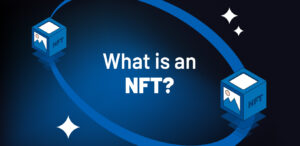The term “metaverse,” which we encountered in Neal Stephenson’s 1992 novel Snow Crash, has started to represent a significant innovation alongside cryptocurrencies. Initially developing as a branch of the NFT sector, it later evolved to represent a much larger goal: the creation of a livable virtual universe. There are still many unknowns about the metaverse. In this article, you will find answers to topics such as what the Metaverse is, what it does, and how it works.
TABLE OF CONTENTS
What is the Metaverse?
The concept of Metaverse refers to virtual worlds where lands, buildings, avatars, clothes, objects, and even names are transformed into NFTs. Users can exist in these worlds, roam around, purchase goods and services, and interact by participating in events.
Games where users create virtual worlds within the context of the game’s own scenario, tools, and items have existed for many years. In these systems, avatars, items, names, and worlds can be created and used almost without limit, and since they are managed by real people, real interactions are among the features that distinguish the Metaverse from a mere game.
What Does the Metaverse Do?
The Metaverse is a virtual universe where users interact through digital avatars. It provides an open infrastructure where innovative solutions can be offered in various fields such as entertainment, education, business, and commerce. Users can participate in virtual conferences, play games, buy virtual land, or shop in virtual stores. Additionally, in the fields of education and business, the Metaverse offers opportunities such as remote work and interactive learning, enabling people to interact with each other through avatars and experience various activities without being tied to the physical world. With advancing technology, the Metaverse holds great potential in both social and commercial areas. In the industrial sector, prototypes of products and architectural structures can be displayed to potential users within the Metaverse, allowing real-world projects to be examined through a virtual copy.
In short, the Metaverse aims to offer an infrastructure so vast that it cannot be confined to concepts like a game or a social space. Indeed, because it provides experiences similar to those we have in the real world, it can truly be called a virtual universe.
How is the Metaverse Used?
There are various digital platforms that provide the infrastructure for the Metaverse. These platforms can be accessed using your computer, mobile device, or VR headset. Users first sign up for a Metaverse platform or link their cryptocurrency wallets. Then, they create avatars to use within the Metaverse. With these avatars, users can take part in virtual events, play games, engage socially, attend business meetings, or pursue education.
What is Virtual Land in the Metaverse?
In the Metaverse, the digital plots of land are referred to as virtual land. Just like physical land, virtual land can be bought and sold. In these transactions, the cryptocurrency of the specific Metaverse where the land is located is used. Virtual land can be acquired through NFT marketplaces.
Virtual land can serve as both an investment and a revenue-generating tool by accepting cryptocurrency from other users attending events. It is even possible to generate income by building structures on the land. In short, any action that can be taken on physical land can also be carried out on virtual land.
Virtual land provides a space for users to socialize. Virtual landowners can explore and navigate their land through their avatars, or even organize various events. Additionally, virtual land can be used in blockchain-based games.
The Relationship Between the Metaverse and NFTs
Transactions carried out in Metaverse worlds are conducted using the local cryptocurrencies specific to those Metaverse environments. The Metaverse is deeply integrated with blockchain technology. All information and materials related to Metaverse worlds are stored on the blockchain. Transactions carried out within these worlds, such as land ownership, are also recorded on the blockchain. Similarly, all items, usernames, and avatars acquired as NFTs have their ownership recorded on the blockchain as well. All components of Metaverse worlds can be bought and sold on NFT marketplaces.
Metaverse Use Cases
The question “What can be done in the Metaverse?” is one of the most commonly asked topics. Below, we have outlined the most popular areas of effective use, as well as how the features provided by this infrastructure are being evaluated. The 5 most widely used areas of the Metaverse are:
Fashion
One of the areas most impacted by the Metaverse is fashion.
Famous brands are opening their own stores in Metaverse environments and selling products within these stores.
Real Estate
The real estate sector takes on a unique form within Metaverse environments.
Virtual property tours and virtual land sales are among the most widely used applications of Metaverse technology.
Gaming
The Metaverse has introduced new perspectives in the gaming industry.
The gaming sector has been integrated into Metaverse environments through innovative models, such as those where players earn income by playing games.
Tourism
For those unable to experience a tourist destination in person, virtual tourism can be conducted using augmented reality.
With the inclusion of tourism in Metaverse environments, virtual tourist trips can offer a more realistic experience.
Social Media
Social media and applications are among the areas of use in the Metaverse.
The use of digital avatars and virtual characters is bringing social media closer to the Metaverse.
What Are the Key Metaverse Coins?
To explore the list of Metaverse coins on BtcTurk | Global and learn more about these initiatives, check out the applications below.
ApeCoin (APE)
APE is a decentralized project inspired by Yuga Labs’ Bored Ape Yacht Club. Bored Ape Yacht Club is an NFT collection built on the Ethereum blockchain. APE is supported by the Ape Foundation.
ApeCoin (APE) is a utility token that strengthens the community structure of the APE ecosystem. APE is built on the Ethereum blockchain and is an ERC-20 token. ApeCoin is not mineable, and the total supply of APE is capped at 1 billion.
Axie Infinity (AXS)
Axie Infinity (AXS) is a blockchain-based battle game developed by the company Sky Mavis in 2018. With a total supply capped at 270 million, AXS is an ERC-20 cryptocurrency on the Ethereum blockchain.
Decentraland (MANA)
Decentraland (MANA) is a virtual reality platform built on the Ethereum blockchain, launched in 2017 by Ariel Meilich and Esteban Ordano. It allows users to create virtual reality content and applications, and earn revenue from them. The Decentraland platform has two separate tokens: MANA and LAND. MANA is an ERC-20 token, and it is used to burn LAND tokens, which are based on the ERC-721 standard.
The Decentraland platform is designed for content creators and users who wish to experience virtual worlds. The metaverse created on Decentraland is divided into 90,601 parcels, each representing a 100-square-meter LAND. Users can purchase land here and create their own content or applications within this virtual universe.
Enjin (ENJ)
Enjin (ENJ) was originally founded in 2009 as a gaming community, and later developed into a social gaming platform by Maxim Blagov and Witek Radomski in 2017. The platform offers users websites, in-game items, and virtual stores where they can trade these items. The cryptocurrency of the Enjin platform, ENJ, was developed in June 2018 as an ERC-20 smart contract on the Ethereum blockchain. Through ENJ, digital products created on the platform can be bought and sold.
The Sandbox (SAND)
The Sandbox is a blockchain-based virtual world gaming platform. It allows players to create virtual life experiences, produce in-game items, and earn revenue from these items within a metaverse-supported, virtual reality gaming world.
On BtcTurk | Global, you can filter the Metaverse cryptocurrencies listed by selecting the Metaverse tab in the category section on the Advanced Trade screen, making it easy to trade.



